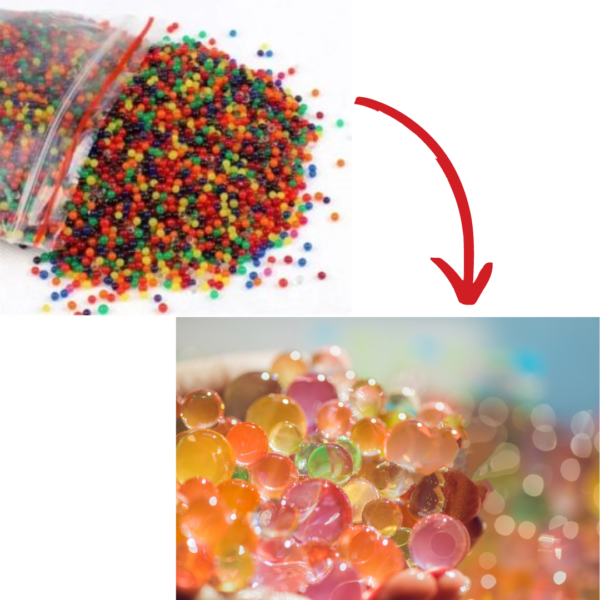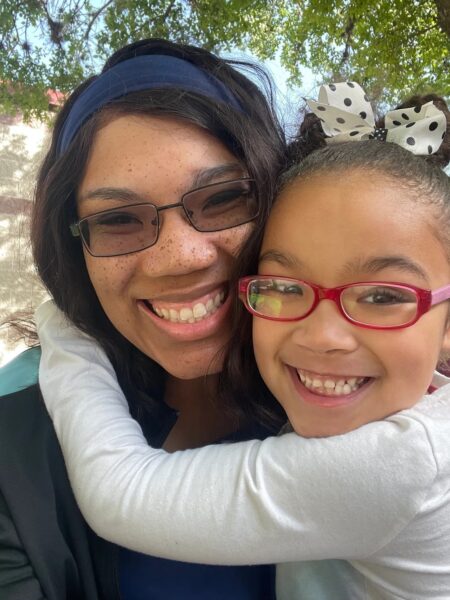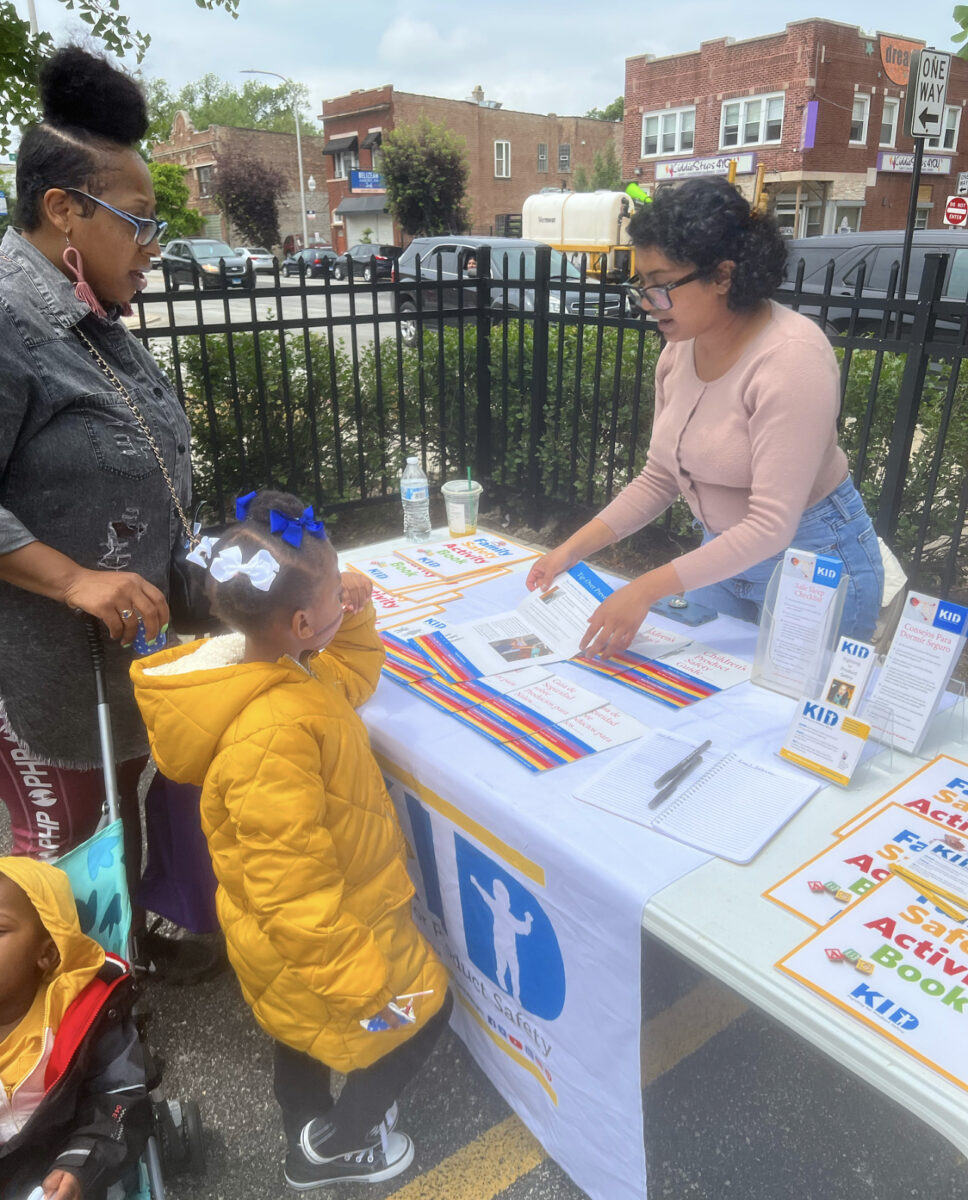 Recently, Health Canada announced a warning about water beads, identifying them as an emerging ingestion hazard that can seriously harm a child if they are swallowed or put in their ears or nose. These dangerous products are made of small super-absorbent polymer crystals that can grow up to 1,500 times their size when placed in liquid. If ingested, the beads absorb bodily fluids and can lead to potentially life-threatening injuries, such as intestinal or bowel obstruction.
Recently, Health Canada announced a warning about water beads, identifying them as an emerging ingestion hazard that can seriously harm a child if they are swallowed or put in their ears or nose. These dangerous products are made of small super-absorbent polymer crystals that can grow up to 1,500 times their size when placed in liquid. If ingested, the beads absorb bodily fluids and can lead to potentially life-threatening injuries, such as intestinal or bowel obstruction.
To learn more about the dangers of these products and what parents and caregivers should do to avoid water bead injuries, KID talked to Ashley Haugen, better known as That Water Bead Lady. Ashley is a leading advocate speaking out against water beads after her own daughter, Kipley, was severely injured by these products. Her educational content on TikTok and Instagram has reached thousands of caregivers urging them to remove these products from their homes. She has also brought the attention of the Consumer Product Safety Commission to this issue, which she spoke to about her experience and the dangers water beads pose.
We asked her a few questions about her story and the dangers water beads present.
Tell us a little about yourself and That Water Bead Lady?
My name is Ashley Haugen. I am 32 years old. I currently reside in Texas with my husband Jonathan, and our two amazing daughters, Abigail and Kipley. In addition to being a busy wife and mother, I am the president and founder of That Water Bead Lady. Our nonprofit organization is devoted to empowering families, health care professionals, and communities by equipping them with vital knowledge to protect their most vulnerable members, both prior to and following product related injury and death. Our mission centers on providing education about potential risks linked to products while also ensuring families are aware of resources available to them. As the leading nonprofit with a special focus on water beads, we pride ourselves on being the foremost authority on this critical area of need.
How do water bead injuries happen and what are the signs and symptoms caregivers should look for?
Typically, small children and pets are finding water beads and swallowing them without caregivers knowing the child had the opportunity to ingest a bead in the first place. Because of their size, bounce, and translucent nature they can easily escape, hiding in carpets, under furniture, appliances, and even in other toys. Like glitter, they are difficult to get rid of. The water beads don’t dissolve or break down. Instead, they shrink back to the size of a sprinkle and can be rehydrated again for reuse. So, as you can imagine, it is easy for them to hide around a house for weeks, and in some cases years without caregivers knowing.
The symptoms of waterproof obstruction can mimic other illnesses such as a virus or stomach flu. Equally disturbing is the fact that water beads are radiolucent. They can mimic intestinal fluid, which means they are difficult to visualize on many forms of imaging such as X-ray and even CT. The best visualization method that has been found so far is ultrasound, but even this method has pros and cons. If your child is around an area where water beads have been used and proceed to develop any of the following symptoms like gastrointestinal issues, nausea, vomiting, constipation, diarrhea, unexplained rash, weight loss with a normal appetite, gagging, trouble breathing or swallowing, neurological symptoms such as seizures or a change in their skills, as well as any new or concerning symptom they may have ingested or inhaled water bead material. Water bead ingestion, insertion, or inhalation is a medical emergency, and the child should be assessed by a health care professional immediately. Caregivers should communicate to health care providers that water beads are radiolucent. If you can provide the medical team with an example of the beads, it can help them better assess the situation.
How did Kipley get hurt and how is she doing now?
 Kipley was injured by water beads in 2017. The water beads were purchased online for her older sister Abigail’s sixth birthday in April. They arrived in a bag with no warning label and no directions. Even though we didn’t see Kipley swallow any beads, we now know that the material was inside of her for approximately 70 days before it was discovered and removed during an emergency exploratory surgery. We were so happy when we brought Kipley home and we tried to go back to life as normal, but it gradually became obvious that something was very wrong. She lost coordination. She was floppier and weaker. She stopped hand-signing, talking, and consistently answering to her own name. Our concerns were repeatedly dismissed by her pediatrician at the time. He claimed that nontoxic toys could never poison a child because they have been tested and that’s why they have that label. He said that water beads used under proper adult supervision with older kids were a safe toy. However, at my insistence, he begrudgingly put in referrals. In September of 2017, early childhood intervention evaluated her carefully, and they validated our concerns. They found that she was in fact experiencing delays and, in October of that same year, Kipley was diagnosed with toxic brain encephalopathy due to neurotoxic acrylamide monomer exposure from water beads.
Kipley was injured by water beads in 2017. The water beads were purchased online for her older sister Abigail’s sixth birthday in April. They arrived in a bag with no warning label and no directions. Even though we didn’t see Kipley swallow any beads, we now know that the material was inside of her for approximately 70 days before it was discovered and removed during an emergency exploratory surgery. We were so happy when we brought Kipley home and we tried to go back to life as normal, but it gradually became obvious that something was very wrong. She lost coordination. She was floppier and weaker. She stopped hand-signing, talking, and consistently answering to her own name. Our concerns were repeatedly dismissed by her pediatrician at the time. He claimed that nontoxic toys could never poison a child because they have been tested and that’s why they have that label. He said that water beads used under proper adult supervision with older kids were a safe toy. However, at my insistence, he begrudgingly put in referrals. In September of 2017, early childhood intervention evaluated her carefully, and they validated our concerns. They found that she was in fact experiencing delays and, in October of that same year, Kipley was diagnosed with toxic brain encephalopathy due to neurotoxic acrylamide monomer exposure from water beads.
What should parents do who have water beads in the house?
Get rid of them by throwing them in the trash and then stay vigilant because to completely eliminate the risk you would need to be able to track a grain of rice in a snowstorm. No one can consistently contain a death trap the size of a sprinkle.
What do you want our readers or listeners’ biggest takeaway to be and what could they do to help prevent water bead ingestion?
Understand the severity of how dangerous these beads are and share your knowledge about the dangers with anyone who has a young child, a child with special needs, or a pet, and alert anyone you see or hear talking about the beads of these hazards. Treat water beads like ticking time bombs. They might not go off today, but the potential is always there.
Are there any other resources or information that you can provide?
Since water beads are marketed as a sensory tool, they are often used in therapy clinics and special education classrooms with an extremely vulnerable group of children. Children who have special needs tend to experience longer periods in certain developmental phases such as the mouthing phase. They can be more likely to put things in their mouths and with water beads being in these classrooms, that is a risk.
I would encourage parents who have children with special needs to add that they would not like water beads used near or around their children into their kid’s IEPs or 504 plan. We have a letter on our website that parents can give to their schools and to their child’s therapy clinic to let them know about the dangers and that they do not want the beads used around their children. We’ve had a lot of parents have success in getting them removed from their child’s school district and from their child’s school and classroom.
KID asked Ashley more questions about her experiences as a parent advocate and challenges she has faced along the path to safety that we released as Part 2 of this interview series. Follow us on social media @kidsindanger to see videos of our interview.


